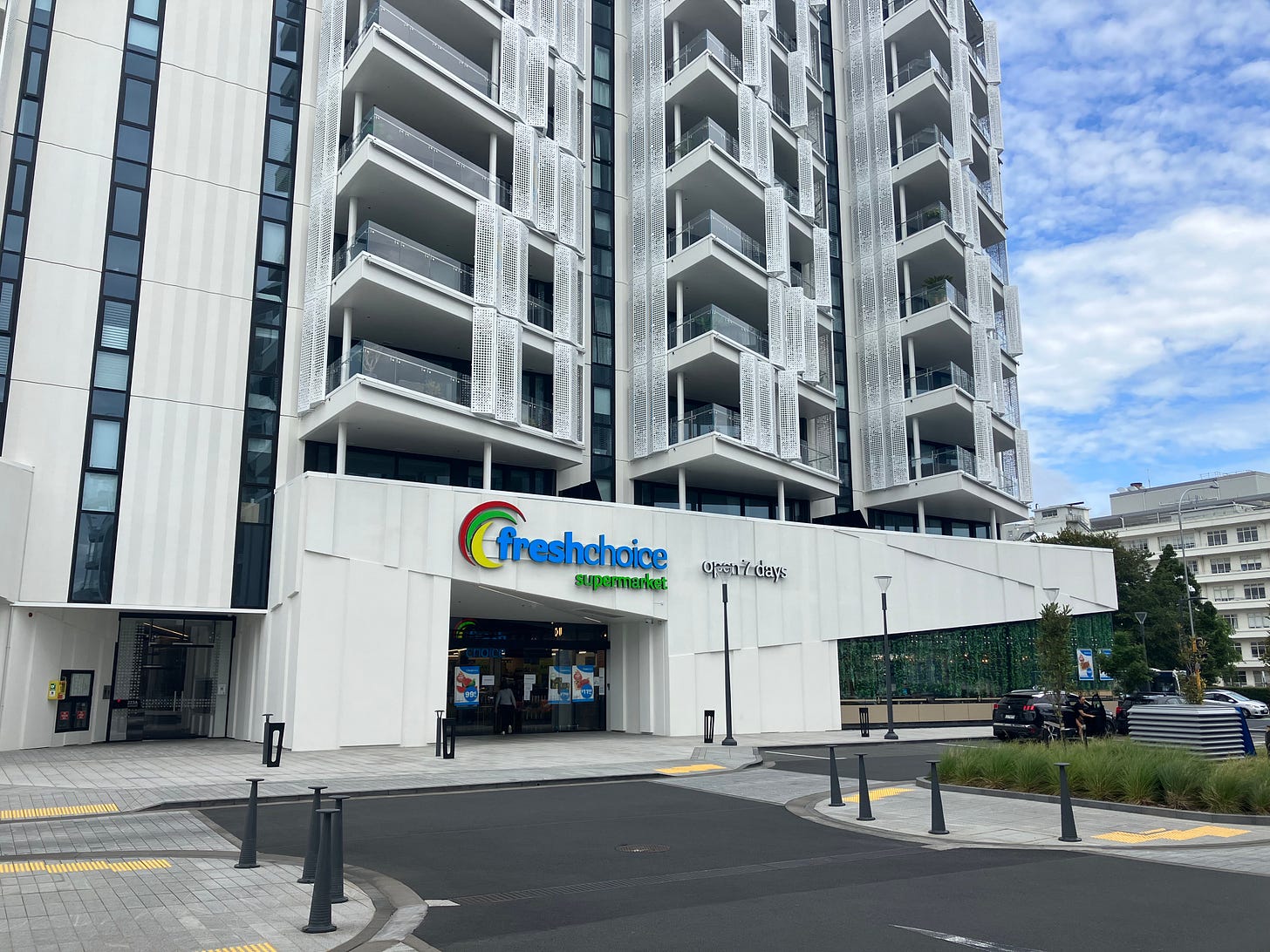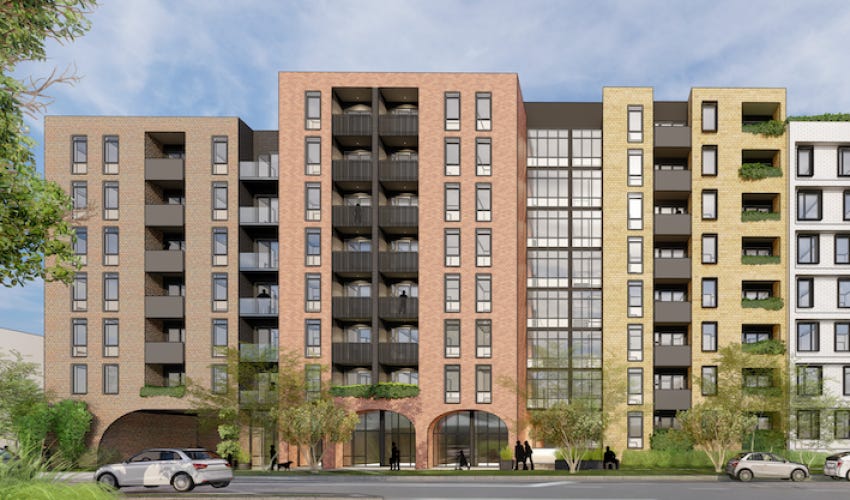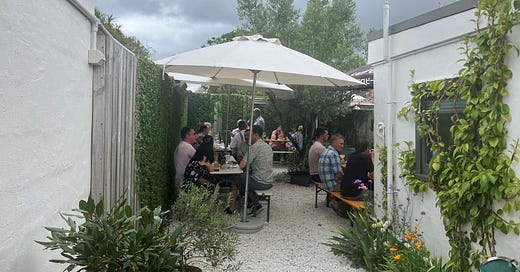Do you get excited when a new business comes to your neighbourhood? Perhaps it’s a new coffee shop, a takeaway restaurant, a dairy (convenience store for international readers), a flower shop or a bar. Whatever it is, have you ever asked the owner how easy it has been to set up? How easy it was to find a space to open their business in?

Historically, many councils around New Zealand have sought to manage commercial land supply through district plans. This is often underpinned by fears of oversupply leading to emptying existing town centres. One of the most notable examples of this was in Ashburton where a plan change1 was passed to “strengthen the role and function of the Town Centre”, not through significantly liberalising the Town Centre zoning to enable greater mixed-use development, but through restricting commercial development elsewhere to try force investment in the Town Centre. One outcome was a developer being restricted in what businesses could operate within an existing commercial development.2 This fear of the impact of new commercial development exists in far larger urban areas too.
Ultimately, seeking a “goldilocks” right-sizing of commercial land supply constrains the market’s ability to meet demand, not just for overall supply and across different scales of commercial development, which pushes up prices, but also to meet location choice. Location choice is critical for responding to changes in land use and travel patterns. During Covid-19 lockdowns and subsequent work-from-home trends, we saw many city centres around the country struggle, while local centres and cafes in suburban locations did relatively well. As our cities see more medium-density residential development within the existing urban area on the back of the National Policy Statement on Urban Development (NPS-UD), we will see this further demand in suburban centres. Enabling new commercial opportunities is critical to creating thriving, liveable neighbourhoods.

Creating scarcity of commercial land also limits the ability for amazing new neighbourhoods, precincts and third places to pop up, at both the premium end of the market, as well as at the affordable end.
A recent article on The Spinoff, highlights how Dominion Road has developed as a centre for Chinese cuisine and culture3. What this story doesn’t mention is the history of the Balmoral shops, which originally developed in the 1920s as a local centre with everyday services to support new housing that developed around the expanding tram network4. The establishment and growth of St Lukes Shopping Centre, just along the road, led to the stagnation and decline of Balmoral as a local services centre. It is from this decline, increase in vacancies and in turn affordable commercial rents, the Dominion Road we now know, and love could grow. The same can be said for the iconic Karangahape Road, which was once one of Auckland’s main shopping precincts but suffered from the construction of the Central Motorway Junction and went into a period of decline before its reinvention over the past decade or so. Periods when those areas were run down and empty could be seen as an oversupply. But fundamentally, these precincts tend to grow out of depreciating commercial properties in low-demand areas, which translates to affordable rents that provide critical affordable commercial opportunities. Ultimately, our cities are far richer and diverse because of this.

At the other end of the market, the wonderful Morningside Precinct5 has grown through significant renovation and newly built commercial spaces in a former light industrial area beside Morningside Station. Through the Auckland Unitary Plan, this area was rezoned to Business - Mixed Use, enabling a greater diversity of activity and the precinct now has a range of cafes, bars, event spaces and a gym. The NPS-UD will see height limits increase to enable at least 6-storey development. We have already seen Simplicity Living announce a major apartment building next door6. Without the underlying Mixed-Use zoning, it would have been more difficult for this precinct to be built and harder for it to grow in the future as the area embraces more medium-density residential.

Promisingly, we may see moves to liberalise zoning to enable more mixed-use development, at least within walkable catchments of rapid transit and centres, as part of the Government’s Going for Housing Growth* policy. If implemented, this could enable the creation of new centres, third places that features commercial and retail spaces to support higher population densities.
I do of course acknowledge that declines in town centres and commercial areas do occur. Sometimes, this due to externalities like construction, see the impact of City Rail Link on Albert Street in Auckland7, and the high number of projects impacting the Tauranga City Centre and policies for compensation and activation come in here. But often it simply due to economic downturns, changes in demand for retail and commercial or growth patterns. Councils that are concerned about maintaining a thriving centre need to evaluate policies, particularly on the land-use planning side, as well as transport to consider how they are best placed to support this. This includes but is not limited to:
Reviewing district plans to encourage re-development in their town centre(s) by enabling greater development and mixture of uses to occur. See Avondale as a case study.
Reviewing their parking policies to ensure the turnover of car parks to support local businesses. This can occur through time limits and/or (more ideally) pricing to ensure some parking is free for those who need it while encouraging those staying longer, particularly workers, to park slightly further away.
Working with businesses to guide placemaking initiatives.
Reviewing and changing bylaws that restrict footpath food and beverage opportunities. Make people and activity in your centre visible!
Undertaking access studies to identify and then implement improvements that make the centre easier to get to by different transport modes.
However, more generally speaking, vacancies of commercial premises provides opportunity, as does greater flexibility in district plans. Towns and cities exist because of the opportunities they create for employment, education and social interaction. Too often we implement policies which restrict this from happening by constraining supply. Instead, let’s let them flourish.
Burns, A (2021). Ashburton developers disappointed at consent decision. Stuff. https://www.stuff.co.nz/national/politics/local-democracy-reporting/300435509/ashburton-developers-disappointed-at-consent-decision
Ashburton District Council (2021). District Plan. https://www.ashburtondc.govt.nz/ashburton-district/Plans-Reports-and-Strategies/district-plan
Tang, E (2024). Chinese, but not a Chinatown: The rise and rise of Dominion Road. The Spinoff. https://thespinoff.co.nz/kai/24-06-2024/chinese-but-not-a-chinatown-the-rise-and-rise-of-dominion-road
Lundberg, K (2013). Then & Now: Dominion Rd & Balmoral Rd, 192? v 2013. Greater Auckland. https://www.greaterauckland.org.nz/2013/11/24/then-now-dominion-rd/
Morningside Precinct. https://www.instagram.com/morningsideforlife/
Simplicity (2024). Simplicity Living announces major Build to Rent development in Morningside. https://simplicity.kiwi/learn/updates/simplicity-living-announces-major-build-to-rent-development-in-morningside
Radio New Zealand (2021). City Rail Link impact on businesses: hardship fund to provide payments. https://www.rnz.co.nz/news/national/450715/city-rail-link-impact-on-businesses-hardship-fund-to-provide-payments
*I have previously provided coverage of the Going for Housing Growth policy. I wish to note to readers that I was appointed to an expert advisory group to advise on Going for Housing Growth, so my commentary on related matters in future will be more limited.



